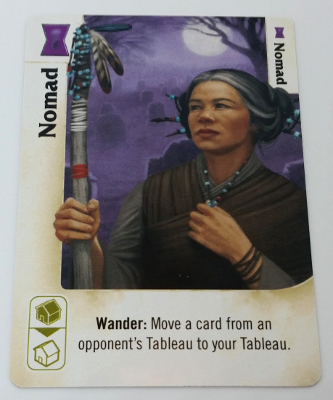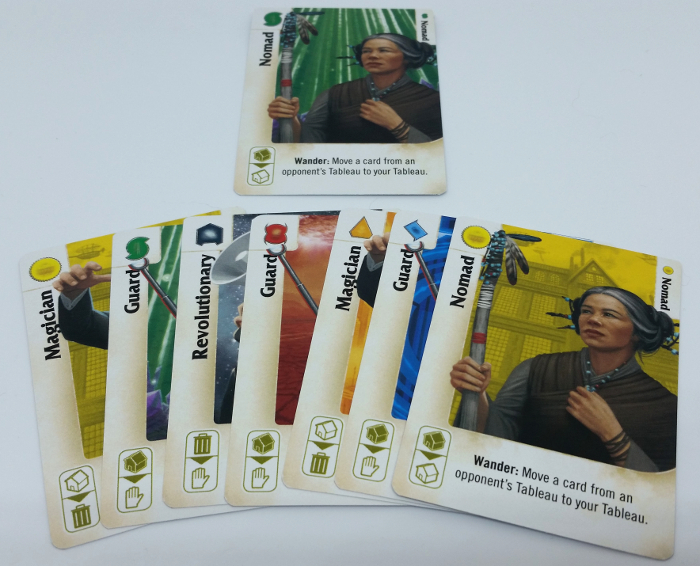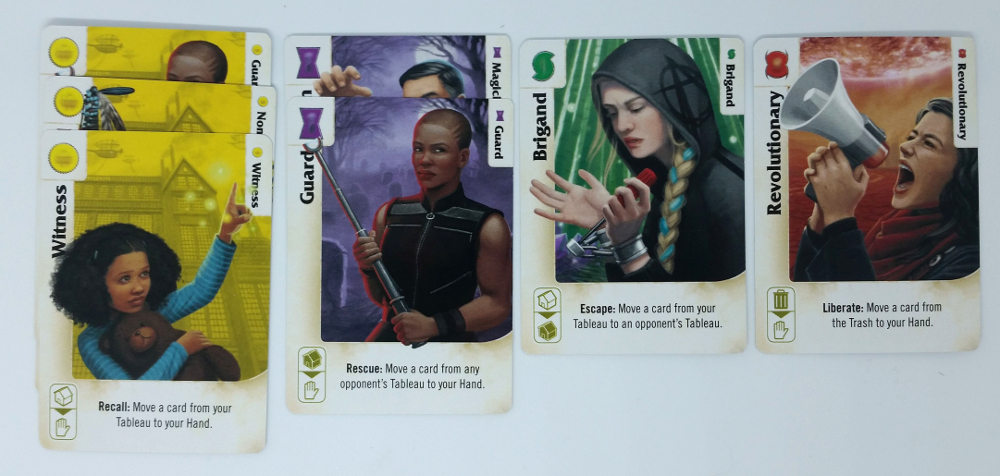Throughout the course of history nearly every society develops stories about the trickster. They are the consummate outsiders who openly question the current norms of their culture. The trickster feeds on upending the status quo, revels in breaking rules, and loves to play mischievous pranks on others. Sometimes their goals are benevolent, a parable for teaching lessons on the error of established ways – or perhaps a reinforcement of them. Other tricksters are more malicious, who only seek to sew discord wherever they go, mocking peasant and king alike simply because they can. From Anansi and Kokopelli to Loki and the coyote, so long as there have been people, so too have there been tricksters, singing a song very much to their own tune.
Well, thanks to a warp in the space-time continuum, some folks have traversed the multiverse to put a stop to the tricksters and their antics once and for all.
…They just have to best them first.
And that’s precisely the goal of Trickster: Champions of Time, the newest title by Action Phase Games. Designed by Daniel Solis, this 2-6 player card game seeks to provide a trick-taking experience where its rules are concise but there’s still plenty of strategy to go around.
Trick-taking games, once limited to the halcyon genre of traditional playing cards, have continued to grow and diversify at a steady pace alongside the rest of the hobby. Gone are the days when the only trick-taking options available to you were generational staples such as Hearts, Bridge, or Pinochle. In fact, so many new trick-taking games have been added to the fold in recent years that it can be difficult to differentiate the play style of one to the next. With so many options readily available nowadays, carving out space for a new trick-taking game can be, well…tricky.So, then, the question becomes: what does Trickster do differently than other games of its kind?

The Nomad moves a card from another player’s tableau into yours – whether you want it or not.
Prototype Shown
The first aspect that Trickster utilizes to set itself apart from many of its contemporaries is that it doesn’t use a static deck. In it, players use a unique 49 card deck, which is broken down into seven Hero card sets of seven different suits. Every Hero set consists of a character with a simple unique ability that must be carried out if possible when played, and each affects the game in different ways.
Some Heroes increase the randomness of a playthrough, for instance, while others focus on creating more calculating and tactical situations to contend with. However, in giving a duality to its namesake, Trickster doesn’t necessarily use the same seven Heroes each time. That’s up to you.
The base game comes with a number of different Hero sets to choose from, giving you a direct hand in dynamically shaping the style and flow that you want from the game. Trickster does for trick-taking games what Ultimate Werewolf does for regular Werewolf: providing a compelling degree of gameplay variety while exponentially increasing its replayability. Some setups can be especially challenging mental games of trying to guess your opponent’s next moves, whereas others are quick and chaotic bouts where it can be challenging to even keep cards you want. Although a small box game, Trickster gives you plenty to explore.
The result is what it’d be like if you routinely let Loki be the dealer: the pieces may change but the rules stay the same.
 Secondly, Trickster deviates slightly from the standard trick-taking round procedures you generally see, although the game largely behaves in familiar pattern. Each round a number of cards are dealt out to each player, as well as a handful of cards to the discard pile. Everyone must also put one card from their hand into their tableau area. (These latter two setup conditions are relevant for several Hero abilities). Then players take turns attempting to play tricks.
Secondly, Trickster deviates slightly from the standard trick-taking round procedures you generally see, although the game largely behaves in familiar pattern. Each round a number of cards are dealt out to each player, as well as a handful of cards to the discard pile. Everyone must also put one card from their hand into their tableau area. (These latter two setup conditions are relevant for several Hero abilities). Then players take turns attempting to play tricks.
Trickster is an ‘evasion-style’ trick-taking game (think Hearts), meaning that your goal is to ideally win the fewest tricks – and therefore points – possible. Knowing that the addition of card powers shakes up the game enough on their own, Trickster offsets their inclusion by not removing the use of any auctioning or set bidding on how many tricks you’ll win, nor does the game use trump cards. This keeps the game streamlined and alleviates additional complexity issues.
The real twist, however, is in regards to the turns themselves. That is, while Trickster uses a typical lead-follow turn structure, it’s not the first player who sets the trick.

The Trickster could play the Green Guard for suit, Yellow Nomad for Hero, or any other for non-matching.
Prototype Shown
Each turn, the first person to play a card is designated the Leader. That player may play any card from their hand, but they must resolve their Hero’s ability when doing so. This is a cardinal rule in Trickster: any time you play a card , you must do the action on the card if possible. Then the second player, designated the Trickster, does the same. The Trickster plays a card in one of three ways:
- Play a card matching the Leader’s Hero
- Play a card matching the Leader’s color
- Play a card not matching either
Afterwards, each successive player must follow the pattern chosen by the Trickster. So, for instance, if the first two players went with Blue cards, you must play a Blue card. If another player can’t play a card, they bust. If, on the other hand, everyone at the table plays a card, then the Trickster busts. When a bust occurs, the player wins the trick and adds those cards to their tableau. Then they become the Leader for the next trick.
Once somebody ends a trick with no cards in hand, the round ends; any remaining cards you have are added to your tableau. Then scoring happens. In Trickster, you normally receive one point for each card in your tableau. However, if you have more cards of a particular color than anyone else, you don’t score those cards. This provides an added intriguing element of risk-taking to the game. Sometimes it can happen that you end up with the most cards of a color by pure chance, but it’s also possible to do this deliberately, strategically accumulating cards as a paradoxical means of ensuring you won’t be penalized for having cards. Tricksy tricksy…
After scoring is done, the board is reset and a new round begins. After three rounds, whoever has the least points is the winner.

This player would score 7 points, but since they have the most Yellow cards, they only score 4.
Prototype Shown
The third and final highlight to Trickster over its contemporaries is in regards to its visuals. Trick-taking games are usually thematically abstract at best, and Trickster is too, ultimately. The game’s very loose premise revolves around the assemblage of various unnamed champions from throughout space and time to put a stop to the trickster in their midst. This is arguably the game’s weakest aspect. The artwork provides added flavor – rather successfully given the game style – but it is, admittedly, still mostly a veneer. Yet what a veneer it is, courtesy of artist Beth Sobel. Thus, the premise may indeed surface-based, but Trickster’s artwork still gives it an appreciable liveliness all the same. It showcases a diverse and wide-ranging cast of characters from across the multiverse, giving the game a much more complete visual presentation of its theme than many genre counterparts.
There’s no trick to Trickster: the game is an excellent and welcomed addition to the trick-taking family. Evoking both the sensation of rules-lite trick-taking classics with an added strategic element of table and hand manipulation, Trickster comes across as familiar to grasp while still fostering a sense of inherent unpredictability. The theme is light and rules concise, but it comes with a vibrant mosaic of characters and a depth of tactical possibilities to explore all the same, making for an admirable 30 minute card game. The modular Hero sets is particularly laudable to this end, allowing you to experiment with different strategies without weighing the game down, while at the same time adding even more replayability to an already highly replayable experience. For those who enjoy trick-taking games, Trickster is an easy game to consider. However, it also diverges enough from the standard mold that you may find it more accessible than many other trick-taking games you’ve come across. And you don’t have to worry about joining a Bridge club to find out.
We can’t speak for all of the multiverse, but here in Earth C-137 you can learn more about Trickster and what it offers by heading over to its Kickstarter page. Guaranteed to be 100% coyote free.
[sc:Preview-Sealer ]
Photo Credits: Trickster cover and artwork by Action Phase Games.

